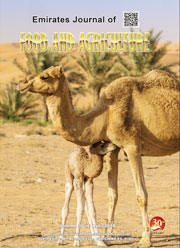MORINGA OLEIFERA L. AN UNDERUTILIZED TREE WITH MACRONUTRIENTS FOR HUMAN HEALTH
DOI:
https://doi.org/10.9755/ejfa.v25i10.17003Keywords:
Human health, Moringa oleifera, Products, NutritionAbstract
Moringa oleifera Lam (Moringaceae) is a highly valued plant, distributed in many countries of the tropics and subtropics. Many parts of the Moringa are edible. Regional uses of the Moringa as food vary widely, and include: the immature seed pods, called "drumsticks", popular in Asia and Africa, leaves, particularly in South India and Africa, mature seeds, oil pressed from the mature seeds and roots. The objective of this study was to evaluate the potential of different morphological parts of this tree as food or feed. Moringa leaves, flowers, seedpods and seeds were collected from Michoacán State, Mexico and analyzed according for mineral contents. The leaves of M. oleifera and the residue obtained after the recovery of oil from seeds can be good sources of proteins for human and animal feeds.










 .
. 